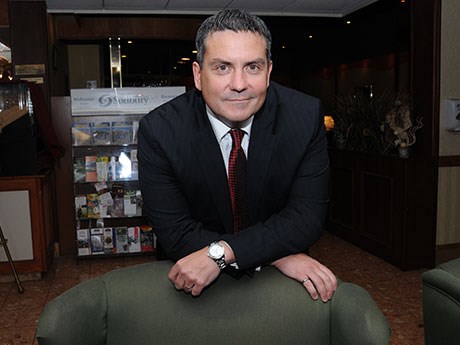Kelly Strong address the Sudbury Chamber of Commerce
The following are excerpts from an address by Kelly Strong, Vale’s vice-president Ontario & UK Operations to the Sudbury Chamber of Commerce, April 11th.
At Vale, we always start our meetings with what we call a “Risk Management” or “Safety Share” to reinforce our most important corporate value, which is “Life Matters Most,” so I’d like to begin with an update on safety at our operations.
I don’t have to tell you that we’ve recently been through a very dark period in our operations’ history with the deaths of (three of our employees). I recognize that this has been difficult not only for our operations and employees, but also for the entire community.
As leader of our operations, I can assure you that there is no higher priority for me than the safety of our people.
In January of last year, we made a decision to temporarily suspend production at our mines in order to take a pause and put our focus squarely on safety.
Together, managers, supervisors, employees and worker health and safety representatives worked on bringing risk at our operations to what we call “ALARA” – or as low as reasonably achievable, not only at our mines, but across all surface plants and departments.
As a result of these efforts, and by working closely together, I’m pleased to report to you that in 2012 our operations achieved its lowest injury frequency on record in a normal production year. It’s an achievement we’re very proud of.
While we continue to face many challenges in our business, eliminating all injuries in our workplace will continue to be our most important priority, and I hope to be able to report back to you next year with even more positive results for 2013.
Prices
As we continue our constant pursuit of zero harm in our operations, our company and the mining industry more broadly, is going through some very challenging times. Today, I’d like to provide you with some context about the new reality in which we find ourselves.
I checked this morning and nickel was at $7.19 a pound. That doesn’t seem bad when you consider a decade ago it was around $2 to $3 dollars. This was about the price of nickel when I joined the company some years ago, and the mine I worked at was surviving, but barely.
(Looking at) the price of nickel in dollars of the day, which is the way we naturally put the price into perspective and on a historical basis, today’s price actually looks pretty reasonable.
But without factoring in costs, prices alone only tell half of the story. The costs required to produce a pound of nickel have risen substantially from where they were a decade ago.
For example, over the last 10 years, the price of crude oil has risen by almost 350 per cent. Over the same period, Canada’s consumer price index has risen by almost 25 per cent, and there has been a 60 per cent increase in the value of the dollar which, as you know, may be great for shopping trips to the U.S., but hurts large producers and exporters such as ourselves.
(Adjusting) historical nickel prices to incorporate today’s costs… demonstrates that today’s prices are actually as low as historical recessionary prices.
In other words, when comparing apples to apples, $7 nickel today is comparable to what $2.50 nickel was 10 years ago. And those of us who lived through those price cycles know how challenging they were.
Note that the costs incorporated here include only direct operating and marketing costs, and don’t include investments in capital or sustaining capital. Factoring in those additional costs, as we must, paints a far more challenging picture for us in Sudbury considering that many of our assets are aging and require investment.
In addition, after 100 years of mining, the ore that was easy to find has been mined, and we are going deeper and deeper to find new sources. We are mining lower grades than we have in the past, making current cost structures unprofitable -- and we need to invest significant money into planning for the mines of tomorrow.
Although these challenges are significant, the challenges associated with our new reality go far beyond costs, especially considering how quickly … market dynamics and economic circumstances can change.


